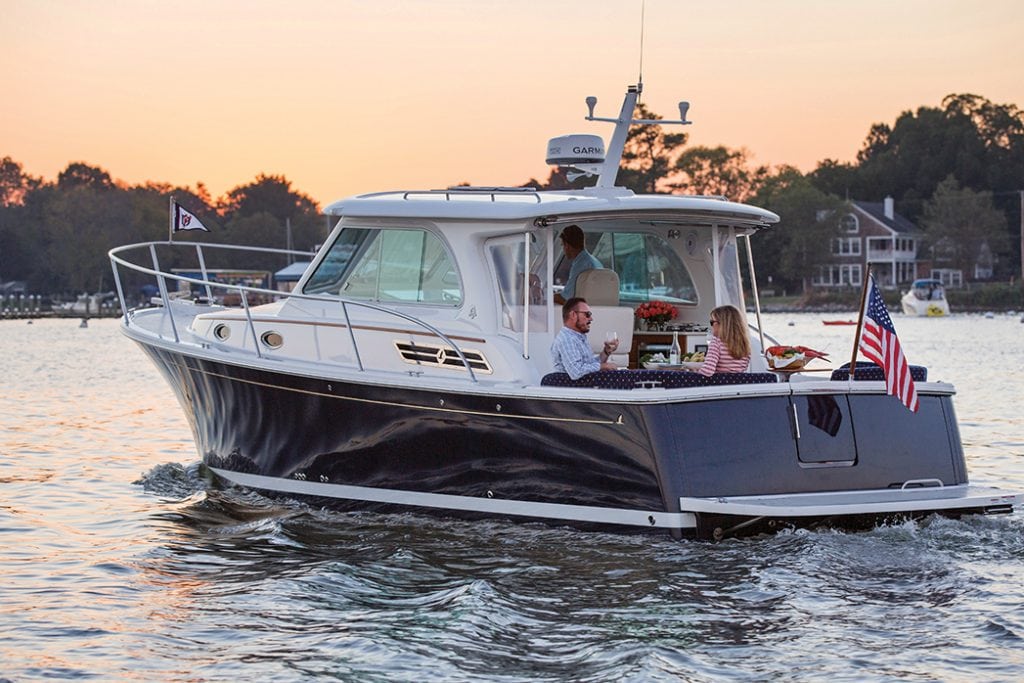Tilt and Trim troubles?
Here are some top tips for tilt and trim troubleshooting.
The time you most appreciate your motor’s tilt and trim feature is when it fails.
At that point, all phases of boat operation have degraded. You can’t trim your motor for better fuel economy or raise it to avoid damage when trailering. Here are some tips for tilt and trim troubleshooting.
The tilt and trim unit allows you to optimize the performance of your boat by adjusting the angle of the engine, which, in turn, adjusts the boat’s running surface. The ability to tilt and trim your engine improves boat performance under a wide variety of conditions from smoothing out a rough ride in heavy seas to reducing draft in shallower waters. While this article is geared toward the tilt and trim system for outboard engines, much of the information provided is pertinent when troubleshooting stern drives.
There are two main types of tilt and trim systems found aboard recreational boats. Older systems often used an electric tilt motor coupled with a mechanical lifting device, such as a worm gear. The most common system in use today is the electric/hydraulic power tilt and trim system. It consists of three primary components: a 12-volt electric motor, a small hydraulic pump, and a reservoir/assembly unit. The electric motor operates the hydraulic pump which forces the fluid to the cylinders or rams that move the motor up or down to trim during operation and for trailering.
Tilt and Trim Troubleshooting Basics
If your tilt and trim unit fails to operate, the following steps should help you identify the problem or at least point you in the right direction. Although these tips are fairly generic in nature, you should be able to apply them to most any tilt/ trim system.
The first step is to determine whether the problem lies with the electric tilt/trim motor or the hydraulic pump assembly. Here are a couple of simple ways to isolate the problem.
Electrical or tilt/trim motor issues
If you try to raise or lower the engine and nothing happens, first check to make sure that the battery is charged and that the battery switch is in the “on” position.
Next, listen for the solenoid/start relay while operating the control (tilt) switch up or down. If you hear nothing, the problem will typically be with the tilt switch, solenoid, or with the wires or connections between the two. If you hear a slight clicking noise while pressing the tilt switch, then you have power from the control switch to the solenoid or relay. The next step is to check the operation of the power tilt and trim motor itself.
All tilt/trim systems use a 12-volt DC reversing-type motor that has one green wire and one blue power wire. If you’re dealing with an older system, the motor may also have a third, black wire, which is used to provide ground to motors that don’t receive it through their casing.
Applying power to the blue wire raises the engine while energizing the green wire lowers it. An easy way to remember this is the phrase: blue sky, green grass (as in the blue wire raises the engine towards the sky; the green wire lowers it toward the ground).
Subscribe Here For More DIY and Maintenance Content
Testing, Testing
To test the motor, the first step is to remove the power to it by disconnecting the blue and green wires. Remove the quick-disconnect plug between the motor and solenoid (if provided) or detach the two wires where they connect to the solenoid or relay. Once disconnected, use a jumper wire to apply 12 volts DC directly to the appropriate wire. But if the engine is in the down position, energize the blue wire (which should raise it). If the engine is in the raised position, connect the jumper to the green wire to lower it.
And if the motor fails to operate with power applied directly to the blue or green wire, the issue lies with the motor. If the motor operates, then the problem is a lack of power to the motor (faulty solenoid or relay, bad connections, etc.). Failed solenoids, relays and corrosion (at connections, relay sockets, quick-disconnect plugs, etc.) are some of the most common problems associated with tilt and trim system failure.
Hydraulic pump assembly problems
If the tilt and trim motor works fine but the engine won’t raise or lower, slips down when in the raised position or won’t stay trimmed, chances are that the problem is with the hydraulic pump or valve body assembly. Start by checking the hydraulic fluid reservoir level. If the level is adequate, the problem is most likely with the hydraulic pump. A low fluid level indicates a possible leak at the seals as does visual fluid around the piston assembly. At this point, repairs typically involve removal and rebuilding the pump or replacing it at a qualified repair facility.
By Frank Lanier, Southern Boating July 2018














It works but is slow going up and down